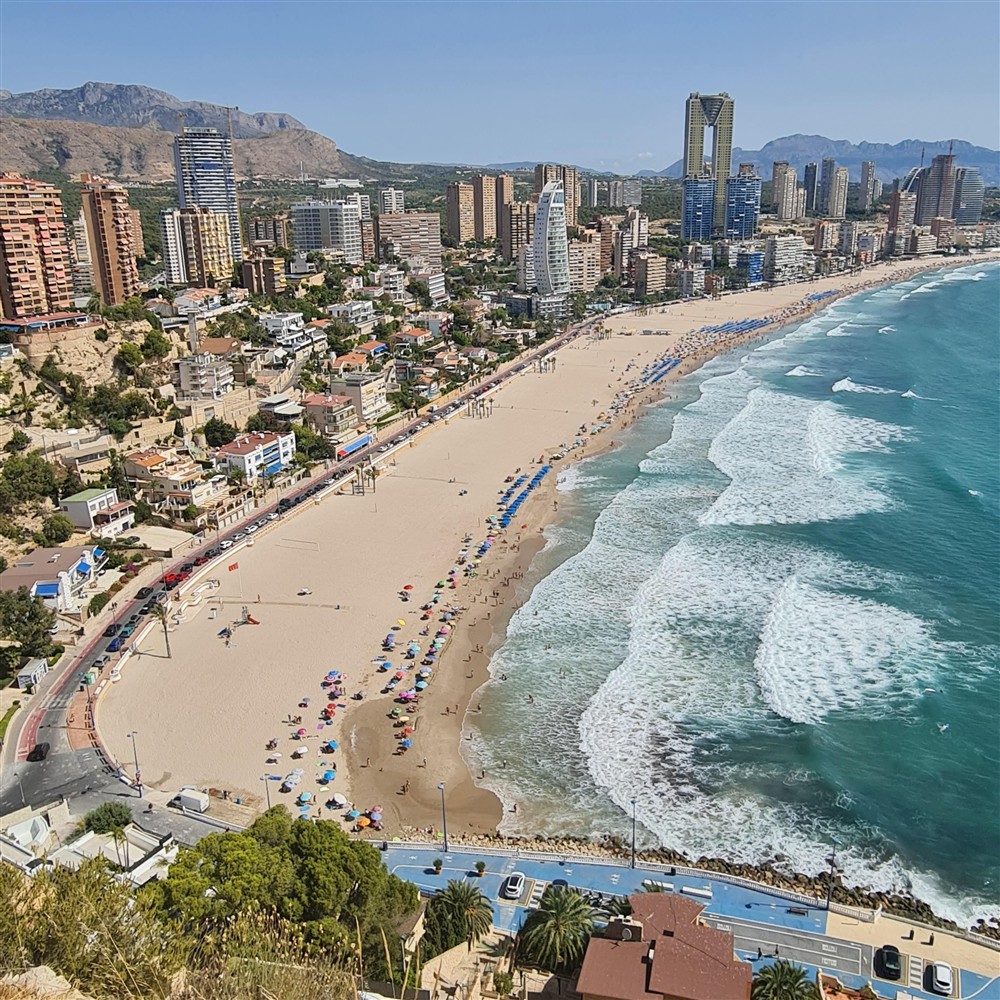
Benidorm - where history meets skyscrapers
Benidorm - where history meets skyscrapers 700 years, two beaches, millions of visitors: how the former fishing village has developed into a vertical


When you stroll through the small streets around the Castillo de Moraira in the morning and the boats slowly come to life in the harbour, you immediately sense that the clocks tick differently here. Moraira is not a classic holiday resort - but a former fishing village that defends its quiet charm against all trends.
From the unspoilt coastline to the destination of connoisseurs
For a long time, Moraira was just an inconspicuous harbour that belonged to Teulada. Fishermen lived in modest houses, kept goats, grew wine and ventured out to sea in good weather. Until the 1970s, there were only a few dozen families who mended their nets here and organised life between high and low tide.
But while its neighbours in Calpe and Benidorm have long since allowed high-rise buildings to proliferate, Moraira deliberately opted for restraint. Instead of concrete blocks, low houses were built, instead of mass hotels, individual holiday homes. A village remained a village - and for this very reason became a magnet for all those who prefer a more relaxed holiday.
Watchtower, wine and a small fishing harbour
Anyone strolling through Moraira today will find many traces of the past. First and foremost the Castillo de Moraira, an 18th century fortress that was once intended to ward off pirates. A little further on, the small Ermita de San Vicente Ferrer is a reminder of the town's rural roots.
There are still a few fishing boats in the harbour, even if the catch is often modest today. From early in the morning, small crates of sea bream and squid are unloaded. A few metres further on, restaurants sell freshly caught fish - usually straight from the cutter to your plate.
Another speciality: the Muscatel wine, which is grown on the slopes around Teulada. It still characterises the local cuisine today - sweet, fragrant, traditional.
Beaches like postcards
Moraira is blessed with bays that seem almost kitschy and beautiful. Playa de l'Ampolla - right in the town - is the largest beach: fine sand, gently sloping, perfect for families. A little further on is the small Cala del Portet, framed by gentle hills and white houses - a picture-book place where serenity reigns even in the height of summer.
If you like, follow the Paseo Ecológico - a coastal path that stretches from Benissa to Moraira and offers fantastic views.
Art, markets and everyday Mediterranean life
Around 10,000 inhabitants live in Moraira - many are newcomers from other parts of Europe who have found their home here. At the same time, artists, designers and musicians are drawn to the village, giving it its creative flavour.
In small galleries and boutiques you can find handmade jewellery, paintings and ceramics. In summer, pop-up exhibitions, concerts and readings are organised in the old town, which you can discover almost by chance while strolling around in the evening.
The traditional Friday market is still one of the meeting places - just like the village festivals: the colourful Moros y Cristianos in June or the patron saint's day in honour of the Virgen de los Desamparados.
In the evening between cocktails and live music
When the sun sinks behind the Cap d'Or, a different rhythm begins in Moraira. The bars in the harbour fill up, the smell of grilled fish and summer fills the air.
Elegant cocktail bars and terraces line the coast, where you can often listen to live music - sometimes Spanish guitars, sometimes subtle lounge sounds. Open-air concerts are organised in the height of summer, bringing locals and visitors together. Those who like it more active can move on later to the small clubs or dance in the open air until late into the night.
Moraira today: between discreet luxury and a lively scene
Moraira has changed - naturally. There are fine restaurants, high-end properties and elegant boutiques. But despite the international clientele, it doesn't feel like a chic neighbourhood, but a place that knows exactly where it comes from.
Perhaps this is its real strength: Moraira shows that development does not mean sacrificing everything old. Instead, it shows that respect for history and a sense of quality can keep a village alive - day and night.
The lesson of Moraira? Balance
Moraira is many things: a retreat for connoisseurs, a village with fishing roots, a place where summer smells of lavender, music and a glass of muscatel. It is a chapter of the Costa Blanca that is told quietly - but lingers all the longer.
▶ Population: approx. 10,000
▶ Main beaches: Playa de l'Ampolla (central), Cala del Portet (quiet and picturesque)
▶ Landmark: Castillo de Moraira
▶ Wine: Muscatel from Teulada
▶ Festivals: Moros y Cristianos in June, patron saint's festival in spring
▶ Special feature: Few high-rise buildings, lively art scene, summer concerts

Benidorm - where history meets skyscrapers 700 years, two beaches, millions of visitors: how the former fishing village has developed into a vertical

Altea - Between history, art and Mediterranean light Part of the new CBM series „My village“ - a search for clues in places that are more